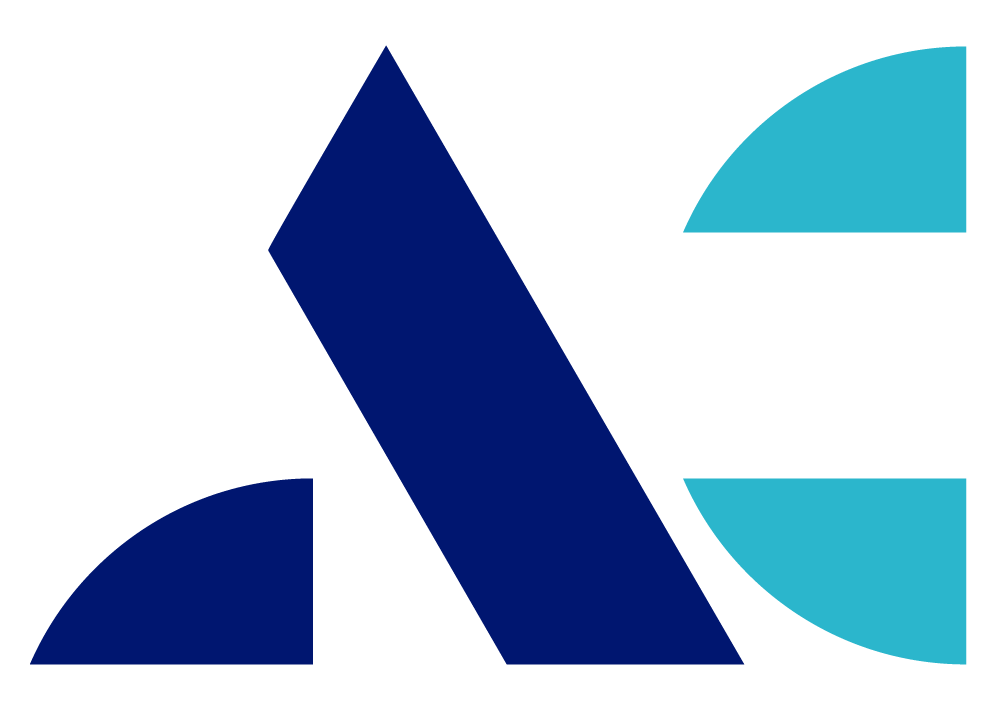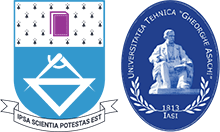- What is Systems Engineering?
- A(R)AI – Automatic Control, Robotics, and Applied Informatics
- Brief history of the field
- From theory to practice in A(R)AI
- What will I learn as a student at A(R)AI?
- Curriculum Vitae: I am a graduate of A(R)AI
- What do our students and graduates say?
What is Systems Engineering?
Systems engineering (rom. Ingineria Sistemelor) is an interdisciplinary field that focuses on the design and management of complex engineering systems throughout their entire lifecycle.
The scope of Systems Engineering is extremely broad, ranging from technical fields such as automatic control engineering, software engineering, and industrial engineering, to the study of system organization or project management. Systems Engineering ensures that all aspects of a project or system are taken into account as a whole.
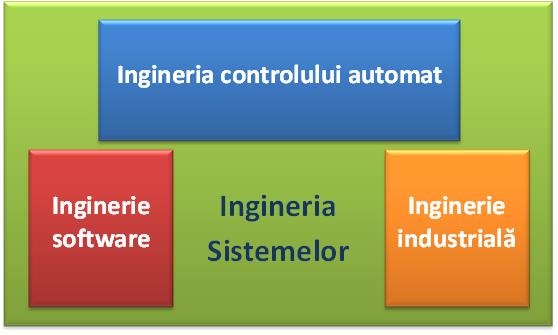
Within the discipline of Systems Engineering, which is offered by all of the nation’s colleges of Automation and Computer Science, Automatic Control and Applied Informatics constitute the dominant areas of competence.
A(R)AI – Automation, Robotics, and Applied Informatics

Automation or Automatic Control represents a branch of science and technology that deals with the study of methods for designing control systems and their use so that technical processes, machines, and equipment can operate without direct human involvement or with minimal intervention.
Robotics is the science that deals with robot technology, design, and manufacturing, as well as the computers that control them and process data received from sensors. Additionally, by studying Robotics, one acquires knowledge about programming and integrating robots into increasingly diverse applications (industry, construction, medicine, agriculture), making progress towards the transition from the personal computer to the “personal robot.” Robotics requires knowledge of electronics, mechanics, and programming, and it is one of the main tools through which automation is implemented.
Informatics is the science of processing information, which is currently done with the help of computers.
Applied informatics is another modern tool through which information represented in the form of models or knowledge about the structure and functioning of a process is processed using software algorithms to control the behavior of the process, to achieve the desired performance.
Brief history of the field
The term automation comes from automatic (self-moving, self-acting), which in turn comes from automaton, a term used in antiquity to refer to a moving mechanism whose behavior resembled that of a living being, as it gave the impression of moving by its own will.
The term automation began to be widely used in the 1940s, during a time when negative feedback controllers or regulators were already being widely adopted in the industry. (feedback controllers).
Such controllers have been used since the end of the 19th century – the first being James Watt’s centrifugal governor. Built on the principle initially described by Maxwell (1868), it was based on achieving a balance of forces that resulted in maintaining the constant rotational speed of a steam engine.
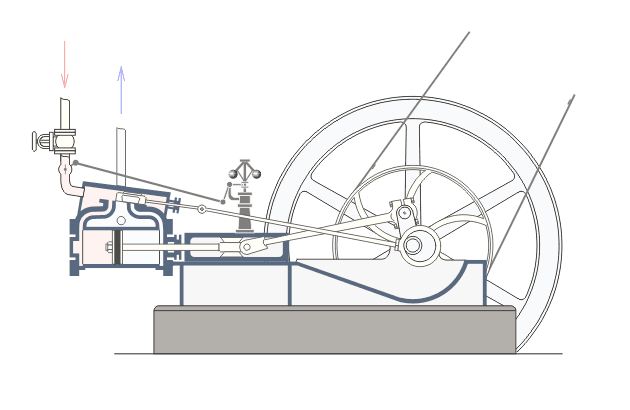
This was followed by an extension of the principle of balance of forces, based on empirical observations, when it came to establishing an automatic steering control system for a ship.

- Intuitively, action is taken at the ship’s helm so that the error between the observed direction and the desired direction is minimized.
- The intervention on the ship’s course is greater the larger the error. The error arises from the influence of disturbances (waves, wind, etc.).
- For small disturbances, the helmsman’s intervention proportional to the error was sufficient.
- For larger disturbances, it has been observed that the intervention must also take into account the previous values of the error, as well as the rate of change of the error, to maintain the desired trajectory of the vessel.
Over time, various control methods and techniques have been developed, depending on the complexity and requirements of the applications.
1. Simple control, On/Off – is used for all-or-nothing commands of processes and installations such as heating, ventilation, and air conditioning systems. (HVAC).
2. Continuous or discrete control – it is based on the continuous or periodic measurement of the system’s output using sensors and the calculation of a correction to keep the measured value within certain limits.
3. Sequential control – it can use a fixed sequence of commands or a variable sequence, in which certain actions are performed based on different states of the system, as is the case with an elevator control system.
4. Intelligent control – combines classical control techniques with specific artificial intelligence techniques: fuzzy logic, neural networks, genetic algorithms, etc. The corrections are made based on the measured values from the process and on the reasoning that approximates the way a human operator thinks.
From theory to practice in A(R)AI
Beyond the simple and intuitive example above, which shows us that the roots of automation are as practical as can be, there is also a theoretical justification; both the behavior of the controlled process and the intervention of the control system can be described in the form of mathematical models.
Knowing these models, even if only approximately, facilitates the task of the automation engineer in designing a new automatic control law or configuring the parameters of an already known law.
Automatic Control, Robotics, and Applied Informatics also use techniques that do not necessarily require a complete understanding of a mathematical model.

Intelligent systems and specific techniques based on computer science methods, artificial intelligence, fuzzy systems, and neural networks are currently being used.
These systems capitalize on the observations and experience accumulated by the human operator, follow the reasoning made by them in the decision-making process, or draw inspiration from adaptation techniques and machine learning, which are characteristic of basic biological processes or the functioning of the human brain.
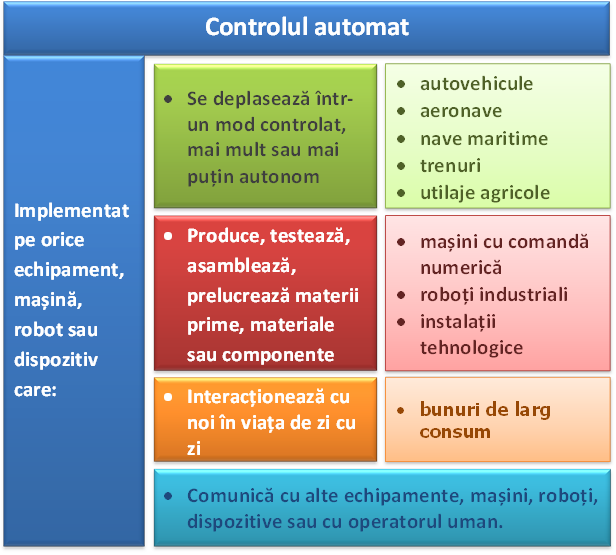
Automatic control has relied over time on various means: from mechanical, hydraulic, pneumatic, and electrical systems to the current electronic devices, computers, and robots that are part of automated systems, usually in different combinations.
All current cars and equipment use combined automatic control techniques, from the most complex installations in modern factories to the simplest consumer goods we encounter in our daily lives.
Why? Evident, due to the benefits that automated systems provide:
- I replace human labor
- I save energy and materials
- I improve the quality of products
- I ensure the accuracy of the information conveyed
- I increase the speed and precision of the operations performed
What will I learn as a student at A(R)AI?
The bachelor’s degree program is aimed at anyone interested in Automated Systems, Robotics, and/or Applied Computer Science.
In the first 2 years, you will study fundamental subjects for the field (mathematics, electrical and electronic engineering, computer science), as well as complementary subjects.
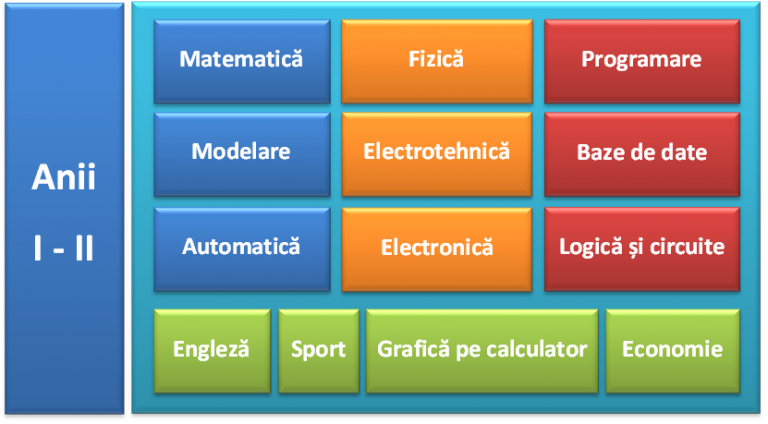
In the next two years, you will only have specialized subjects from the main fields of study: Automation and Robotics, respectively Applied Computer Science.

Some subjects are mandatory, while others are optional. The optional subjects allow for a deeper understanding of Automation and Robotics, as well as Applied Computer Science.
In the end, the Bachelor’s exam is taken, and the degree in Automatic Control and Applied Informatics is obtained.
Upon graduating from the Bachelor’s program in Automatic Control and Applied Informatics, you will receive an engineering diploma, and you can either enter the workforce or continue your studies in one of our master’s programs.

Compared to other study programs, the Automatic Control and Applied Informatics program offers several advantages.
First of all, our students learn to transform regulatory laws and automatic control algorithms into efficient programs.
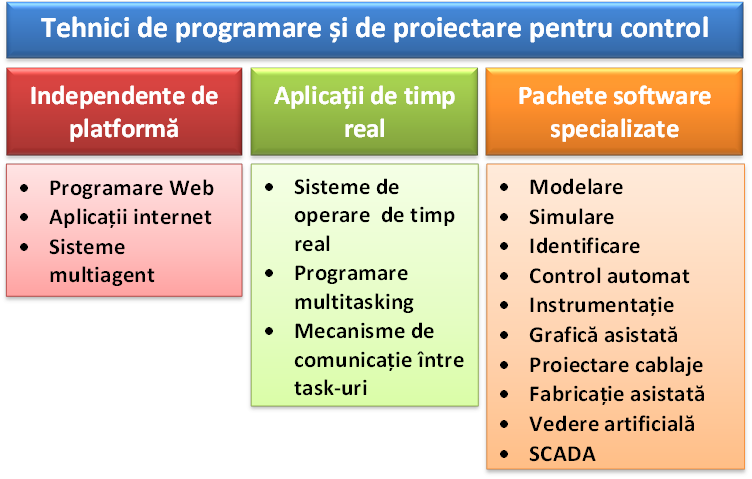
Our students also learn to apply computer science concepts in a concrete way, closely related to the physical world, where the programs they create interact not only with people but also with the entire environment, at much higher speeds and data transmission rates, in real time.
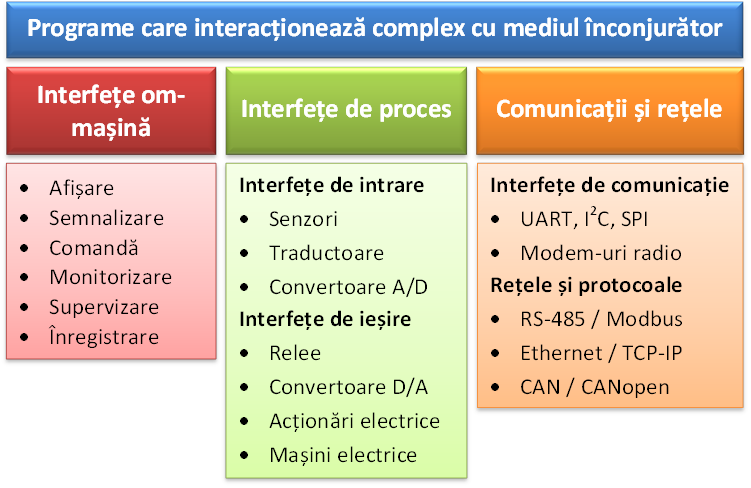
Such a comprehensive, interdisciplinary vision, which combines programming languages and techniques with an understanding of control techniques, the structure, and functioning of the devices and equipment for which the programs are developed, can only be obtained within the Automatic Control and Applied Informatics study program in the field of Systems Engineering.
Curriculum Vitae: Graduate A(R)AI

Currently, the implementation of concepts, techniques, and methods specific to automation cannot be conceived without the assistance of electronic devices, computers, robots, and communication between all these components.

Due to a unique combination of knowledge and practical skills, which is no longer found in other study programs, Automatic Control and Applied Informatics is a specialization that offers a wide range of possible occupations and opportunities for professional career development.
What does the long-term future hold for the profession of automation engineer?
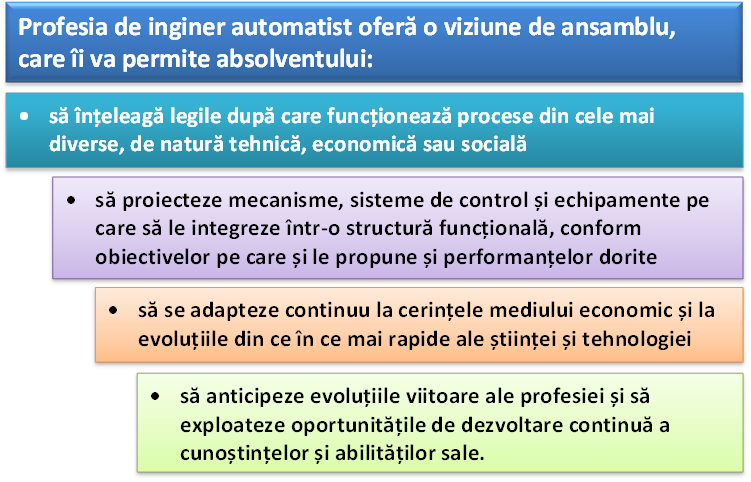
The automation engineer integrates hardware and software modules and designs architectures that give the system meaning, performance, and viability.
Interdisciplinary training, acquired during undergraduate studies and further complemented by a master’s program that enhances the education of automation engineers with project management skills and deepens knowledge in the fields of automatic control, applied informatics, or embedded systems in the automotive sector, ensures a successful career and gives our graduates an advantage in securing management positions in companies, competing with graduates from other specializations.
What our students and graduates say

“In high school, I liked math and computer science, but I didn’t want to be a programmer.” I wanted to be an engineer. I wanted to apply computer science and mathematics to something practical, different from a computer.
Pușcașu Ștefan-Daniel
The AC has discovered teachers who prioritize sharing knowledge with students, and we have uncovered new fields, such as robotics and automation.
If you enjoy innovations and challenges, consider AC as one of your options!”
Automatic Control and Applied Informatics, fourth-year student AIA.
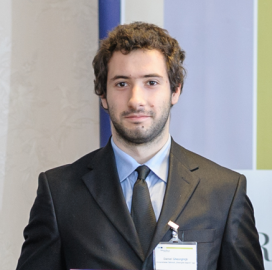
“Since high school, I have oscillated between Aerospace Engineering, Electronics, Electrical Engineering, and Automation and Computer Science.”
Gheorghiță Daniel
Wishing to delve into a field adjacent to computer science, I focused on the latter.
Among the two departments, I chose Systems Engineering (Applied Automation and Computer Science) because, although there is a common core of subjects in mathematics, electronics, and programming, I was drawn to robotics, artificial intelligence, and control systems (even though I had no idea at the time what systems theory or control engineering meant).
Both the theoretical foundations, the experience gained through projects during my studies, and the continuous support from the professors who guided me at various stages over the past four years have allowed me to aim for a research position at a top-ranked university in the world.
Following an interview, I was offered one of the two scholarships allocated to students from outside the UK for the PhD program “Robotics and Autonomous Systems” at the University of Edinburgh. Furthermore, I was offered the opportunity to participate in a project in partnership with NASA (National Aeronautics and Space Administration) that aims to send the humanoid robot Valkyrie into space.
I wish and hope to establish a bridge of collaboration between the Robotics Center in Edinburgh and the AIA department, so that it can benefit from its real potential.”
Automatic Control and Applied Informatics – valedictorian AIA 2015
